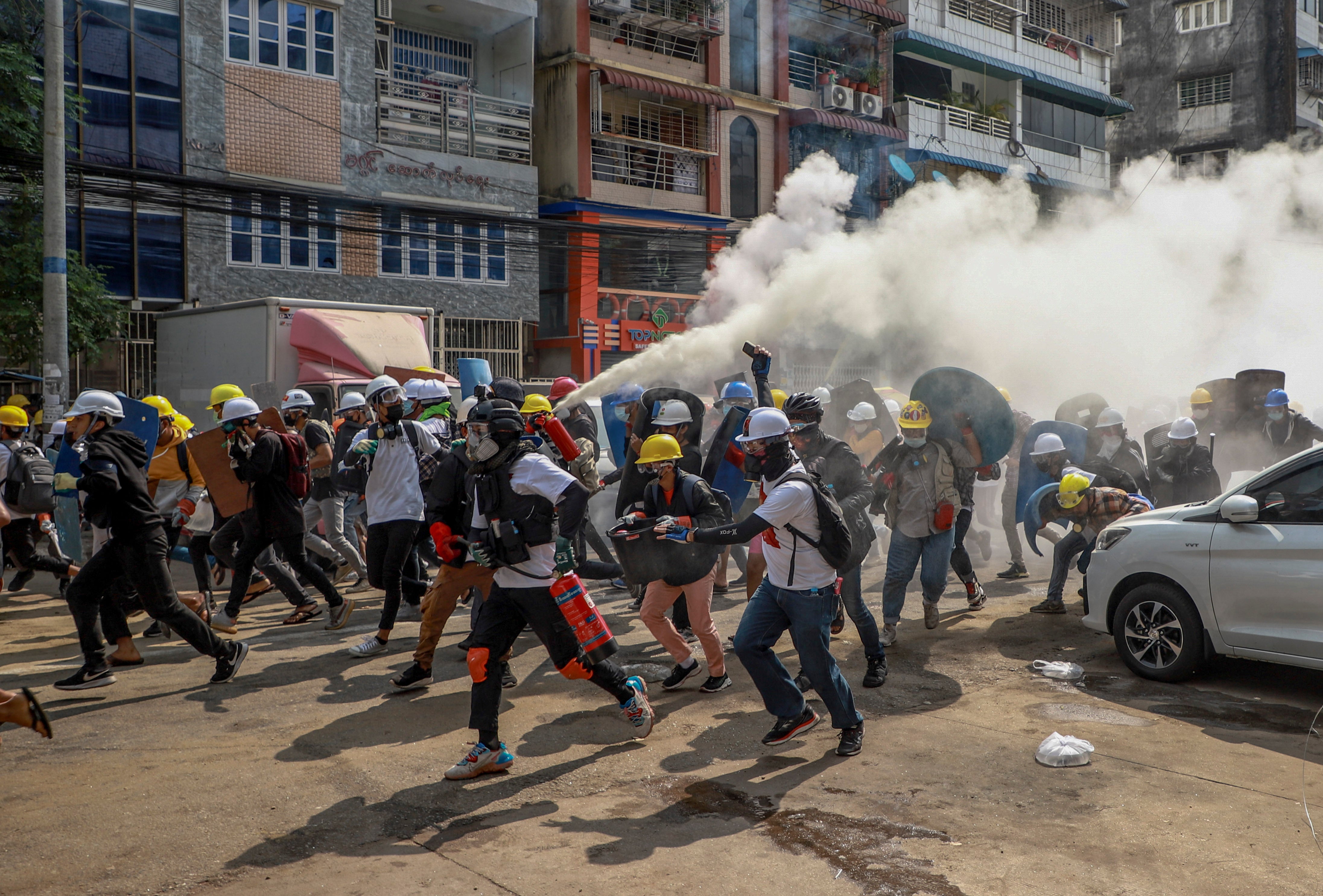Myanmar politician ‘beaten to death’ in custody as police start occupying major hospitals
Attempts by the military to occupy a university in Mandalay were met with strong protests

Your support helps us to tell the story
From reproductive rights to climate change to Big Tech, The Independent is on the ground when the story is developing. Whether it's investigating the financials of Elon Musk's pro-Trump PAC or producing our latest documentary, 'The A Word', which shines a light on the American women fighting for reproductive rights, we know how important it is to parse out the facts from the messaging.
At such a critical moment in US history, we need reporters on the ground. Your donation allows us to keep sending journalists to speak to both sides of the story.
The Independent is trusted by Americans across the entire political spectrum. And unlike many other quality news outlets, we choose not to lock Americans out of our reporting and analysis with paywalls. We believe quality journalism should be available to everyone, paid for by those who can afford it.
Your support makes all the difference.Troops in Myanmar have occupied hospitals and universities as part of their clampdown against nationwide protests in the country against the military coup.
Many hospitals, university campuses, and temple compounds in Yangon, Ayeyarwady, Bago, Tanintharyi, Mandalay and Sagaing regions and Mon, Kayah, Kachin and Rakhine states have been occupied, according to local media reports.
On Sunday, the body of U Khin Maung Latt who was arrested on Saturday, was received by his family who were reportedly told that he had died after fainting. He was a member of Ms Aung San Suu Kyi’s National League for Democracy (NLD) party.
However, activists claim that he died in custody after getting beaten up by the police. A blood-stained cloth was also photographed near the 58-year-old politician’s head.
In Yangon, soldiers occupied the city’s largest hospital, Yangon General Hospital, as well as Gandhi Hospital and the Waibargi Specialist Hospital, medical workers told Myanmar Now.
The public demand to vacate hospitals and other occupied areas has been growing stronger, with hospital staff reported to be in conversation with the troops, however, it isn’t clear if any of the areas have been vacated.
In the city of Mandalay, the military’s attempt to occupy a university was met with strong protests after which tear gas and rubber bullets were fired, leaving several people injured.
“Two teachers were also beaten. Now the soldiers are stationed inside the university. They were still firing shots when we had to leave the scene,” one of the victims, Kyaw Thu, who sustained injuries on his face, told Myanmar Now.
Along with Mandalay’s general hospitals and government buildings, army personnels were also spotted at the famous Mahamuni Buddha Temple, one of Myanmar’s most popular Buddhist pilgrimage sites, according to the report.
The military has reportedly arrested hundreds of people involved in protesting its seizure of power on 1 February, while several strikes and demonstrations are being called in different areas.
More than 54 people have died in crackdowns on protests, including many teenagers and young people, according to the United Nations.
Locals also reported hearing sounds of gunfire and grenades in Yangon over the weekend, according to media reports. Security forces have been raiding residential areas and arresting people without offering any clarification, one of the residents told Reuters.
However, despite the violent clampdown measures, protests have been erupting in several cities, along with a trade union strike on Monday that resulted in shops, factories and banks downing shutters in Yangon.



Join our commenting forum
Join thought-provoking conversations, follow other Independent readers and see their replies
Comments